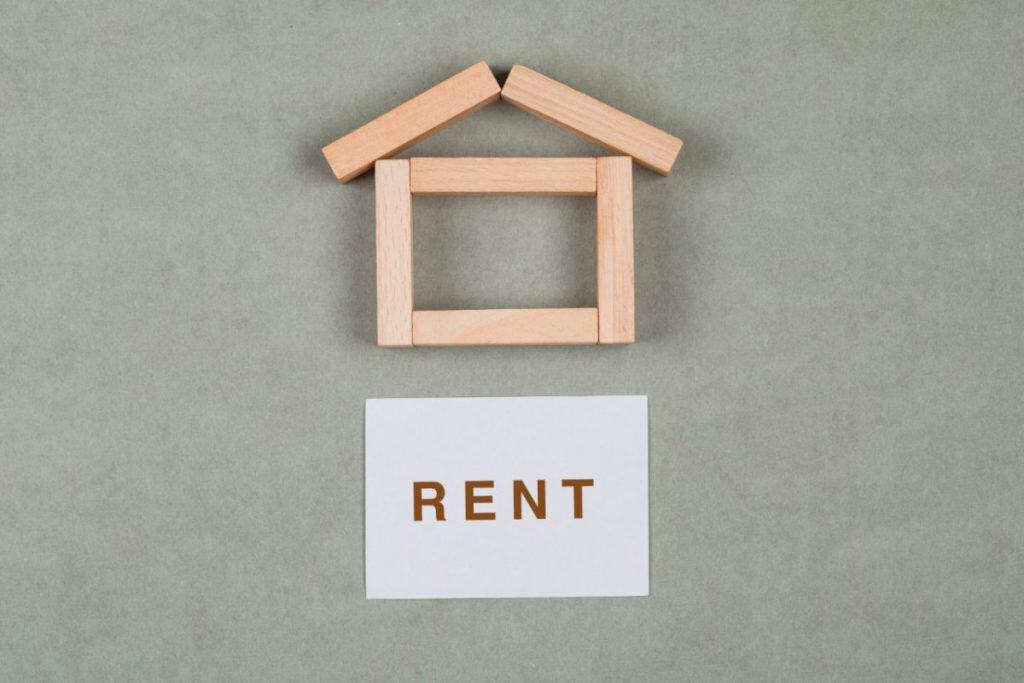Top Rent Collection Methods: How Online Payments Simplify the Process
- September 21, 2024
- Mia Robinson
- Category: Rent & Security Deposits

Rent collection methods have changed a lot over time, moving from old-fashioned ways of getting paid to more modern online options. In the past, landlords usually collected rent using cash, checks, or money orders. While these methods were popular, they had many problems. For example, they could cause delays because of mailing or traveling, and there was a risk of checks bouncing or money orders getting lost. Managing payments, especially for landlords with many properties, was difficult, and keeping track of everything was very time-consuming.
Traditional methods also created issues with late payments, as renters could forget deadlines or encounter delays. Landlords often spent time issuing payment reminders and dealing with inconsistent payment flows. The advent of online rent collection has addressed many of these issues by offering a faster, more secure alternative. Online payments simplify tracking and recording transactions, ensure immediate payment confirmations, and reduce the likelihood of missed deadlines due to automated payment reminders.
The move to online payments is getting stronger, especially because of the rise in digital platforms and the younger, tech-friendly rental market. These platforms make things easier for both landlords and tenants, making the process of collecting rent smoother and more efficient. Features like automatic reminders, fewer late payments, and better security have made online rent payments the top choice for many landlords and property managers. This change is making rent collection simpler and helping landlords manage their money better, while also giving tenants more flexible ways to pay.
Traditional Rent Collection Methods: Pros and Cons
Traditional rent collection methods, such as cash, checks, and money orders, have long been used by landlords, but they come with various limitations. Cash payments are straightforward but risky. There’s no digital or paper trail, which makes it difficult to track payments accurately. This method also poses safety concerns, especially if large amounts are handled. Additionally, lost cash can result in disputes between tenants and landlords.
Checks are a common way to pay, but they come with issues. If a tenant doesn’t have enough money in their account, the check might bounce, causing extra fees and late payments. While checks leave a record, their physical form means that mailing can cause delays, making it harder for landlords to collect rent.
Money orders are safer than cash or checks because they ensure the money is there. But tenants have to go somewhere in person to buy them, which can be a hassle. Like checks, money orders can also be delayed if sent through the mail, and keeping track of them can be difficult for landlords who manage many payments at once.
Another issue with traditional methods is the lack of payment reminders. Unlike automated systems, these methods rely on tenants remembering due dates, which often leads to late payments and requires landlords to follow up. In contrast, online payments streamline the process by automating reminders and reducing the likelihood of missed payments. This shift towards digital solutions addresses many of the drawbacks inherent in traditional methods and is gaining momentum in today’s rental market.

Rise of Digital Rent Collection: The Basics
The digital shift in rent collection has transformed the rental landscape, offering landlords and tenants convenient, fast, and secure payment options. Popular platforms like PayPal, Venmo, and Zelle have gained traction due to their ease of use. Each platform allows tenants to send payments with just an email or phone number, facilitating quick transactions. PayPal and Venmo offer flexibility by allowing payments via credit or debit cards, while Zelle transfers funds directly between bank accounts with no transaction fees.
Switching to digital rent payments offers many advantages. One big benefit is faster processing—payments happen instantly, so landlords don’t have to wait for checks to be cleared. This helps avoid late payments caused by mail or bank delays. Another advantage is convenience. With automated systems, tenants can set up regular payments, which lowers the risk of forgetting to pay rent. Lastly, digital payments are more secure because they use encrypted transactions, protecting against fraud and making the rent collection process safer.
When comparing manual vs. automated payment systems, manual methods such as checks or cash require significant time and effort, both for sending payments and keeping records. In contrast, automated systems streamline rent collection by integrating payment reminders and tracking systems. These features help landlords stay organized, reducing administrative tasks and improving cash flow consistency.
Benefits of Online Payment Solutions for Rent Collection
Online payment solutions are revolutionizing rent collection for both tenants and landlords, making the process faster, easier, and more secure. By moving away from traditional methods like checks and cash, landlords can streamline their operations, while tenants enjoy more flexibility and convenience in handling payments.
Convenience for Tenants and Landlords: Online payments provide unmatched ease of use. Tenants can set up recurring payments, eliminating the need to remember due dates or manually make payments. For landlords, these systems reduce the need for physical interaction, paperwork, and late payments, making rent collection more reliable and accessible from anywhere.
Faster Payment Processing: Unlike checks, which can take several days to clear, online payments are processed instantly. This ensures that landlords get their money quickly. It also reduces delays and improves cash flow, helping both tenants and landlords avoid issues such as late fees.
Better Record Keeping: Online payment platforms automatically generate receipts and maintain detailed transaction records, simplifying financial tracking. This not only helps with tax preparation but also makes it easier to resolve any disputes over payment history.
Enhanced Security: With advanced encryption and fraud protection, online payment systems provide a more secure way to handle rent transactions. This reduces the risk of theft, lost checks, or unauthorized access, giving both parties peace of mind when it comes to handling rent payments.
Popular Online Payment Platforms for Rent Collection
Several online payment platforms simplify rent collection, each offering different features, fees, and user interfaces to meet the needs of landlords and tenants. Here’s a comparison of some popular options:
Rentec Direct: Rentec Direct is popular among landlords with many properties because it offers affordable services. It allows free ACH transfers and only charges 2.95% for credit card payments. It also accepts tenant payments in cash through PayNearMe. Rentec Direct has strong property management features, such as tenant screening and maintenance requests, making it perfect for property managers with larger portfolios.
AppFolio: This platform is a comprehensive solution for larger property management firms. It supports ACH payments with a minimal fee and offers quick processing times. AppFolio also includes advanced features such as maintenance tracking, tenant communication, and lease management. However, with monthly costs starting around $280, it’s more suitable for larger property managers rather than small landlords.
Buildium: Designed for landlords managing between 1 and 5,000 units, Buildium offers ACH payments for $1.25 per transaction and a 2.95% fee for credit cards. It integrates well with accounting software and provides detailed financial reports, making it a good choice for property owners who need comprehensive financial management. The platform’s pricing can range from $55 to $375 per month, depending on the features required, which makes it better for medium to large property portfolios.
Avail: Avail is perfect for small landlords, as it has an easy-to-use interface and a straightforward setup. With some plans, ACH transfers are free, but tenants pay $2.50 for ACH payments or 3.5% for credit card payments. Avail’s affordability and simplicity make it a great option for smaller landlords managing just a few properties.
Different platforms meet various landlord needs—small property owners might find Avail more cost-effective, while larger companies could benefit from the advanced features provided by AppFolio or Buildium.

Common Challenges with Online Rent Collection and How to Overcome Them
While online rent collection has simplified the process for many landlords, it still comes with certain challenges. Technical difficulties, digital literacy among tenants, and platform limitations are common hurdles.
Technical difficulties: Certain renters might encounter problems related to internet connection, lost passwords, or using online payment systems. These problems may result in delays or payments being missed. In order to address this issue, landlords should opt for platforms that offer robust customer support and user-friendly interfaces, guaranteeing tenants can receive help whenever necessary.
Digital literacy: Not all tenants are comfortable using technology. Some may struggle with online payments due to a lack of digital literacy, particularly older tenants or those without regular internet access. Landlords can help by offering step-by-step guides, instructional videos, or even personal assistance to ensure tenants feel comfortable transitioning to digital payments.
Platform limitations: Different platforms have varied features. For example, some may not allow recurring payments, while others could lack payment reminders or have high transaction fees. It’s important to evaluate platforms thoroughly, focusing on those that offer user-friendly features like automatic payment reminders, multiple payment options (ACH, credit cards), and secure processing to minimize late payments.
The Future of Rent Collection: Embracing New Technologies
The landscape of rent collection is evolving rapidly, with emerging technologies like mobile payment apps, cryptocurrency, and blockchain transforming the process. Mobile payment apps such as Venmo and PayPal have already made rent payments more convenient, enabling tenants to pay rent on the go while offering landlords real-time confirmation of payments. These platforms streamline transactions, reducing late payments and simplifying rent collection.
In the future, cryptocurrency and blockchain technology can bring even more big changes. Blockchain, which is known for being clear and safe, could create a system where rent payments are recorded on a permanent list that can’t be changed. This makes things more secure and lowers the risks compared to usual banking systems. Cryptocurrencies can help people pay each other across the world without needing regular banks.
Smart contracts, a key feature of blockchain, could revolutionize rent collection further by automating payments. These self-executing contracts ensure that when specific conditions are met (like a tenant receiving a rent reminder), the payment is automatically transferred to the landlord without requiring manual intervention. This reduces disputes over late payments and provides both parties with a more efficient process.
As Decentralized Finance (DeFi) grows, it may become integral to rent collection by enabling landlords and tenants to use decentralized lending, borrowing, and payment solutions. By eliminating third-party intermediaries, DeFi can reduce transaction costs and create a more seamless and transparent rental system.
Conclusion
Online payments provide many benefits for collecting rent, such as quicker processing, enhanced security, and easier record-keeping. By using these methods, landlords can make their work smoother, decrease late payments, and make tenants happier. Using digital tools ensures a more efficient and dependable future for managing properties.




